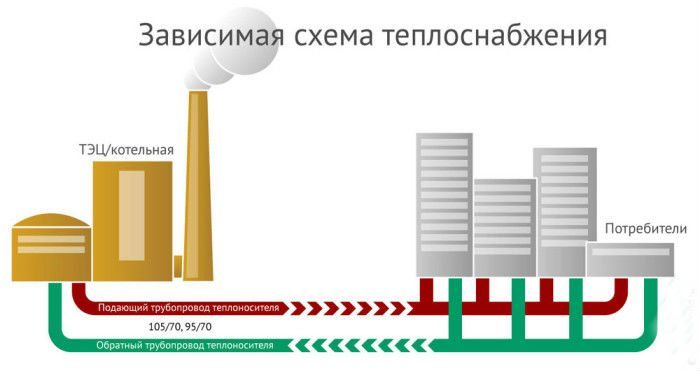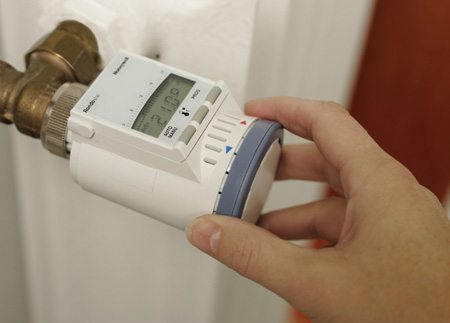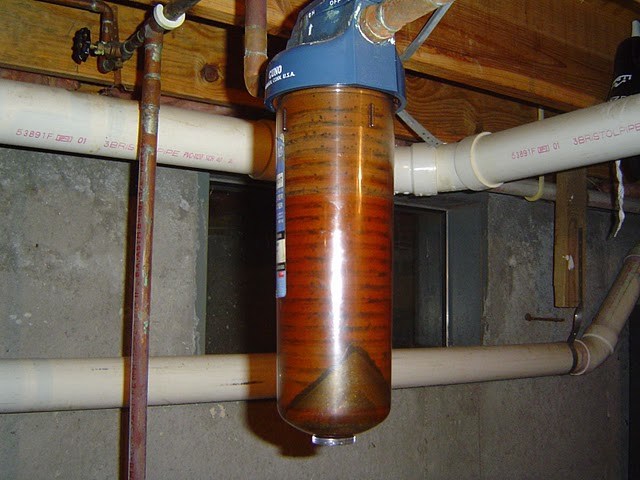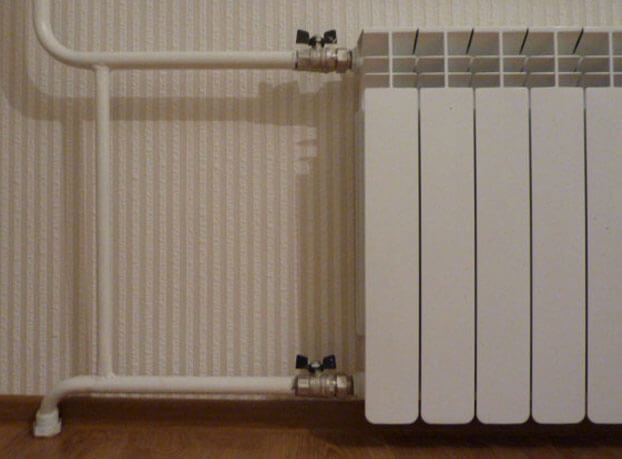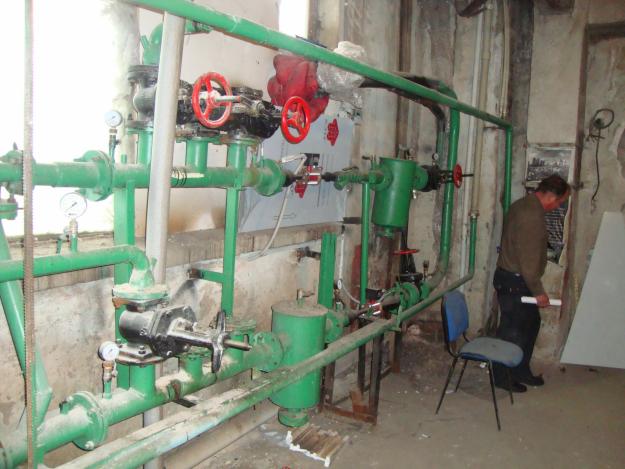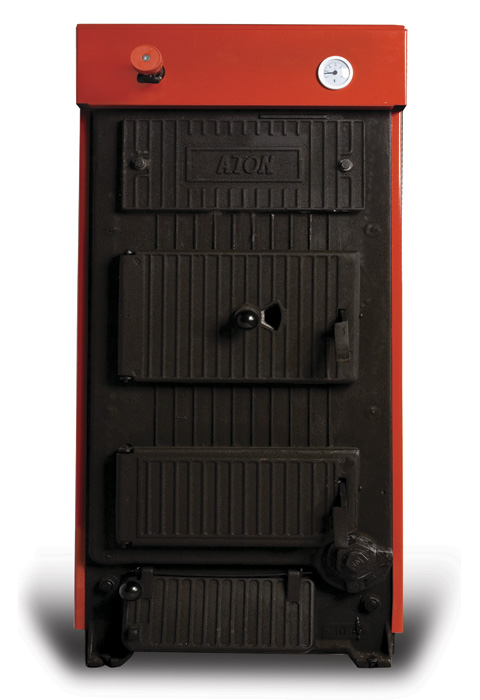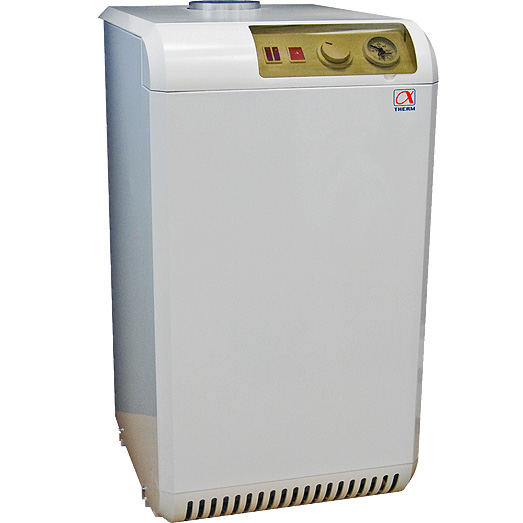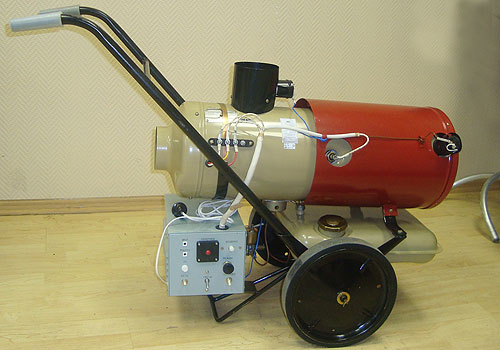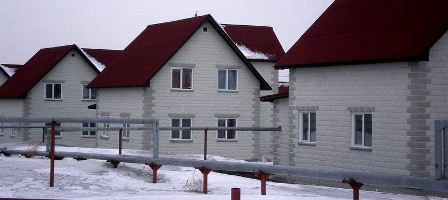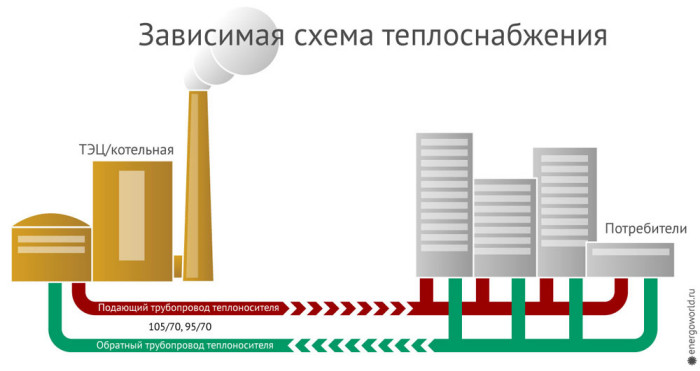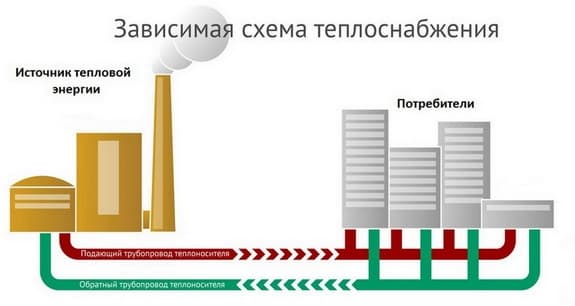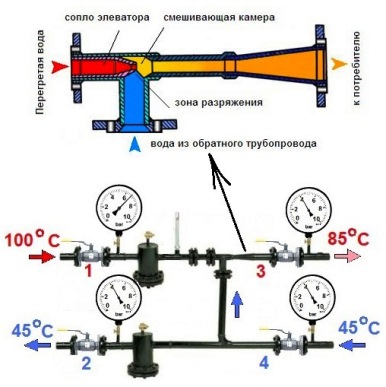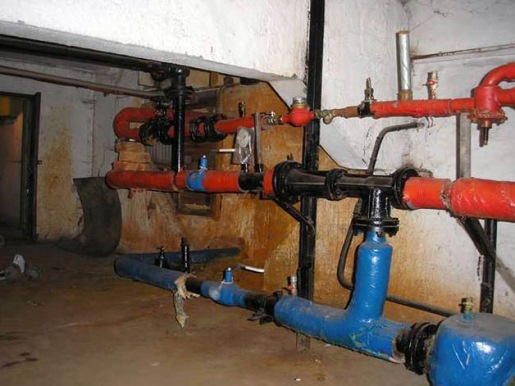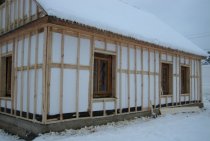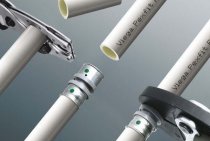Connection options
Currently, there are two main connection schemes:
- dependent - is considered the simplest, therefore it is most often used;
- independent - gained popularity relatively recently, it is widely used in the construction of new residential areas.
Below we will take a closer look at each method in order to find out which solution will be the most effective for providing comfort and coziness to your room.
Dependent connection method
This connection option usually requires the creation of in-house heat points, often equipped with elevators. In their mixing unit, superheated water from the external main network is mixed with the return, which makes it possible to reduce its temperature to the required temperature, usually below 100 °C. Thanks to this, the heating system inside the house is completely dependent on external heat supply.
| Advantages |
The main feature of the scheme is that water is supplied to the heating and water supply system directly from the heating main, so the costs in this case pay off in a short time:
|
| Flaws |
As in any scheme, here you can find not only positive aspects, but also negative ones, among which it should be noted:
|
Connection methods:
-
direct connection
; -
with elevator
; -
with on jumper
; -
with pump mounting on supply or return
; -
combined version - elevator and pump
.

Independent connection method
Experts say that this option of heat supply makes it possible to reduce resource costs by almost 40%.
In the current situation with their constant rise in price, this will significantly save the family budget.
- The principle of operation is as follows:
-
- connection of the heating system of subscribers is carried out using an additional heat exchanger;
- heating occurs due to two hydraulic isolated circuits - the main heating main heats the coolant of a closed internal heating network;
- in this case, mixing of water does not occur.
- The circulation of the coolant occurs in the heating mechanism due to the circulation pump, which regularly supplies it through the heating elements. In an independent connection scheme, an expansion tank with a supply of water in case of leaks can be provided. In this case, it is possible to maintain the circulation of the coolant with a certain amount of heat even in case of accidents in the heating main.
In fact, this suggests that if the supply of hot water through the heating main stops, the temperature in the heated rooms will not drop sharply for a long time. -
The scope of this connection method is quite wide. For example, it is used:
There is one condition - the pressure in the return must be more than 0.6 MPa.
- Advantages of the method:
-
- the instruction allows you to adjust the temperature;
- great energy saving effect.
- Flaws:
-
- high price;
- complexity of repair and maintenance work.
Circuit Comparison
- The dependent option has one, but an important plus - the low cost of implementation. The elevator assembly in a small country house is easily assembled with your own hands from shutoff valves, which can be purchased at a store or on the market.The only expensive part will be only the nozzle, on which the capacity of the elevator depends.
- An independent circuit allows you to:
-
- to adjust the temperature of the coolant;
- increase the efficiency of use, bringing this level up to 40%;
- a large amount of contaminants, such as scale, sand and mineral salts, do not enter the heating system. The heat carrier can be purified water or non-freezing liquids.
- you can easily heat clean drinking water for hot supply needs.
Comparison for reliability and durability
The practice of operating technically complex and multilevel systems shows that they are less maintainable and more often must be subjected to preventive inspections with maintenance measures. It cannot be said that the independent connection of the heating system reduces the overall level of reliability and safety (in some cases even increases), but the tactics of carrying out repair and restoration measures should be at a different and more responsible level.

At a minimum, an increase in labor and time resources will be required when inspecting the heat exchanger and adjacent piping. Possible uncontrolled accidents at this node can lead to damage to the pipeline. Therefore, experts recommend installing several sensors with pressure, temperature and tightness control. The latest collector cabinets also provide for the use of self-diagnostic complexes for continuous monitoring of the system status. As for the closed heating infrastructure, such control and measuring fittings will also not be superfluous for it, but in this case its need is not so high.
Advantages of independent systems
Already at the approach to the main consumers of the home water supply network, a whole range of preparatory measures is provided to ensure the distribution, filtration and adjustment of the coolant pressure. All loads fall not on the final equipment, but on the heat exchanger with a hydraulic tank, which directly receive resources from the main source. Such resource preparation is practically impossible in private when operating dependent heating systems. The connection of an independent circuit also allows rational use of water for drinking needs of optimal purification. The streams are divided according to the intended purpose and each line can provide a separate level of training that meets the technological requirements.
Independent heating system
The principal feature of this system is the presence of an intermediate collection point. In residential private houses, it can be implemented as a control station (including for pressure reduction), but this scheme is made independent by the integration of a heat exchanger. It performs the functions of a rational and balanced redistribution of hot flows, also maintaining, if necessary, an optimal temperature regime. That is, with an independent connection of the heating system, the heating network as such does not act as a direct source of supply, but only directs flows to an intermediate technological point. Further, in accordance with the settings made, in a more targeted version, both drinking water and hot water supply with heating and other domestic needs can be supplied from it.
Which heating scheme is better
There is one more drawback of gas-fired non-volatile heating boilers - they do not have the ability to control the weather and control the unit using an external thermostat that determines the temperature regime, for example, in the most remote room. Accordingly, it is not possible to program the temperature for a long period, for example, for two weeks.
About the types of heating systems in detail on the video:
In multi-apartment buildings, the overwhelming majority use the central heating system for heating.However, the quality of such services depends on many factors, including the condition of the heating main and equipment. The scheme of connecting the house to the heating network is also important. In this case, you will learn about dependent and independent connection methods, as well as how to make the heating in the apartment non-volatile.
Dependent heating system
The central link of such communications is the elevator unit, through which the tasks of regulating the coolant are performed. From the heating main to the distribution unit of a residential building, water is supplied through a pipeline, and mechanical control is carried out by a system of inlet valves and valves - typical plumbing fittings. At the next level, there are locking mechanisms that regulate the supply of hot water to the return and inlet circuits. Moreover, the heating system in a private country house can provide for two tie-ins - for the return line and the supply channel. Further, the home tie-ins are followed by a chamber in which the heat carriers are mixed. Hot streams can indirectly contact water in the return circuit, transferring some of the heat to it. Summarizing this part, we can conclude that the water is sent to the DHW system directly from the central heating main.
Terminology
Let's get rid of the confusion first.
Energy independence
- this is the ability of heating equipment to work in the absence of electricity. The ability is undoubtedly pleasant, but we are not talking about it now. However, we will also touch on this topic.
What is the difference between independent and dependent heating system? Scheme of connection to the heating main.
dependent schema
Imagine an ordinary residential building. How is it arranged?
- Entrance valves cut off the elevator from the route.
- Behind them, gate valves or valves are embedded in the supply and return, through which hot water supply can be supplied from the supply or return pipeline.
- After the DHW tie-ins, we see the actual elevator - a nozzle with a mixing chamber. A jet of hotter water at high pressure from the direct pipeline heats up part of the return water and recirculates it.
- Finally, house valves cut off the heating system. They are closed in summer and open in winter.
The key feature that a dependent heating scheme has is that water enters the heating and water supply systems directly from the heating main.
independent schema
Now let's imagine another scheme:
- Water from the supply pipeline enters the return pipeline, giving energy to the heat exchanger along the way. Water, we repeat, is not used for heating and hot water needs.
- In the same heat exchanger, but in its other circuit, drinking water is supplied from the water supply. It heats up and enters the heating system. It can also be used for household needs.
Actually, we have exhaustively described an independent scheme for connecting a heating system.
Comparison of solutions
A dependent scheme for connecting heating has, in essence, only one advantage, but a very important one - the cheapness of implementation. An elevator assembly for a small cottage can be assembled with your own hands from consumer-grade valves
Noticeable against the background of distributing batteries around the house will be only the price of manufacturing a nozzle - the only exclusive one made, the diameter of which determines the thermal power of the elevator.
What is the asset of an independent scheme?
Incomparably more flexible temperature control.
It is enough just to reduce the flow of coolant through the heat exchanger - and the house will become colder.
-
The practical consequence of the flexible adjustment of heating to the needs of the house is efficiency.
Relative to the dependent system, it is estimated at 10-40 percent. - Finally, the main thing: in a dependent system, we are forced to use water with a lot of impurities.
It carries sand, scale and a lot of mineral salts.
We are not talking about the use of water as drinking water, moreover, in some regions it is even undesirable to wash with hot tap water. An independent circuit makes it possible to use purified water or even non-freezing coolants as a coolant.
For the needs of hot water supply, it is not a problem to heat drinking water.
Dependence on electricity
And now back to energy dependence. When does the heating system need electricity to function, and when can it be dispensed with?
Solid fuel boilers
The canonical solution is an ordinary steel or cast-iron boiler with a water jacket in the furnace and mechanical adjustment of the blower using a thermostat. This unit is completely non-volatile.
In the photo - a classic solid fuel boiler.
However, this design has an important drawback: the boiler requires frequent fuel loading. To make heating as independent as possible from a person, three technical solutions allow:
-
Bunker and conveyor belt,
as the fuel burns out, it feeds new portions of sawdust or pellets. Electricity is necessary at least for the operation of the conveyor. - divides combustion into two stages: pyrolysis of firewood with a limited supply of oxygen and combustion of the resulting gas. In this case, the gas combustion chamber is located below the pyrolysis chamber. The movement of combustion products against the vector of natural thrust requires the operation of an electric fan.
-
Upper combustion boiler
able to work on one tab of coal up to five days. Only the top layer of fuel smolders; air is supplied to it from top to bottom, and the ash is carried away by a stream of hot combustion products. Air circulation is provided by... that's right, an electric fan.
Gas
Non-volatile gas heating boilers use manual ignition with a piezoelectric element and flame adjustment with a mechanical thermostat. When the main burner is extinguished at a high coolant temperature, the pilot continues to operate.
Boilers with electronic ignition stop the gas supply completely when idle. As soon as the coolant cools below the critical temperature, the discharge ignites the main burner, and heating resumes. In addition, the blower fan is often electrically driven to supply air to the burner.
Which scheme is better? If you have frequent power outages, a non-volatile gas heating boiler would be more appropriate. Precisely because he is able to do without electricity in principle. On the other hand, these devices are less economical: maintaining the pilot flame takes up to 20% of the total gas consumed.
Another useful feature that gas-fired non-volatile heating boilers lack is the ability to control the weather and control it using an external thermostat that takes the temperature, for example, in a remote room. Of course, we are not talking about programming the temperature regime for a day or a week either.
solarium
Everything is simple here: solar boilers are COMPLETELY identical to gas boilers with electronic ignition. Only the burners are different. Actually, a lot of dual-fuel installations are produced.
It is clear that without a forced draft fan and electronic ignition, the devices simply cannot work.
Safety and efficiency of independent heating systems
To be able to save money on heating, several conditions must be met:
- Develop and approve the project in the licensing authorities. Without the approved GUI and agreed with all project authorities, all modifications will be illegal. Therefore, the results cannot be used.
- Perform installation or reconstruction of existing equipment according to the design solution.
- Install a heat energy meter. This will allow you to pay for the received thermal energy exactly in the volume in which it was consumed.
- Provide the necessary level of automation or manual control. CHPPs do not react very quickly to temperature changes in weather conditions and can continue to fire their boilers to the fullest. And through the heat exchange tank, unclaimed energy will be transferred to the networks of consumers who open windows and vents from excessive heat.
Installation and connection of an independent heating system
Installation work in its complexity is not much more complicated than the gravity route. Of the additional measures, it is worth noting the need to organize an uninterruptible power supply. This will make it possible not to be left without heat during a power outage and is implemented by automatically switching on an uninterruptible power supply or a liquid fuel electric generator.
In addition, the operating routes of a centralized type are also subject to modernization by separating heat carriers with a heat exchange tank, installing a forced circulation pump and an uninterruptible power supply. Replacement or dismantling of pipelines with radiators is not required.

The schemes by which heating devices are connected are of two types. Depending on the use of the scheme, two types of heat supply systems are distinguished - dependent and heat supply.
The meaning of an independent heat supply system is that the equipment of subscribers is isolated from the heat supplier using hydraulics. And in order to provide subscribers with heat, auxiliary exchangers of central heating points are needed.
In the case of using a dependent system, it is necessary to constantly connect it to the energy carrier. Such a system consists of pipes, as well as a boiler, which are interconnected into one. The meaning of a dependent heat supply system is to circulate hot water in a circle in a continuous mode. Due to the fact that the dependent system is completely tied to the heating main, which is the main source of thermal energy, when using it, it is impossible to adjust the water temperature or even, in case of warming, turn off the heating.
Scheme of a dependent heating system
When using an independent heating system, different types of fuel can be used. It should be noted that the installation of such a system is quite expensive. Unlike a dependent system, water can be used for other needs in an independent system. It is also an advantage that an independent one is much easier to install in a building.
Among other things, such a system makes it possible to save money due to the fact that its operation requires a small amount of fuel. The amount of fuel can be adjusted at will, thereby creating comfortable conditions in the premises.

Scheme of an independent heating system
Principle of operation
As noted above, for the operation of a dependent system, process water is used, which during operation leaves salt and sand in the pipes, which impairs the permeability of water in the pipes. In the case of an independent one, it is possible to use a purified one. At the same time, the equipment can be shown to have a sufficiently long service life.
An independent heating system does well without electricity. It may be needed only if a bunker and a conveyor are installed in order to supply fuel to the boiler.
You can also use a boiler that works with. Such boilers are a structure consisting of mechanical, thermostat, and steel tanks. Such a system does not tie you to the gas main.
Dependent heating system
A dependent system is often called an open system. And it is called so, because a heat carrier is taken from the supply pipe to provide the house with hot water.The dependent scheme is often used in administrative, multi-apartment and other buildings that are intended for general use. A feature of an open system is that the coolant flows through the main networks and enters the house immediately.
If the temperature of the heat carrier in the supply pipeline is not more than 95 ° C, then it can be directed to heating devices. But if the temperature exceeds 95 ° C, then it is necessary to install an elevator unit at the entrance to the house. With its help, the water that comes from the heating radiators is mixed into the hot coolant to lower its temperature.
Previously, no one paid special attention to the flow rate of the coolant, so this scheme was often used. Dependent heating system does not require large installation costs
To provide the house with hot water, there is no need to lay additional pipes.
But in addition to the above advantages, one can also distinguish the disadvantage of a dependent heating system:
- It is problematic to adjust the temperature in the rooms. Valves quickly fail due to the poor quality of the heat carrier.
- From the main pipes, various dirt and rust enters the heating radiators. Steel and cast iron radiators continue their work without any changes. But in aluminum batteries, the ingress of rust and dirt adversely affects the work.
- Although the coolant passes all the required desalination and purification, it still passes through rusty main pipelines. Accordingly, the coolant cannot be of good quality. This factor is a big disadvantage, since the coolant is used for water supply.
- Due to repair work, pressure drops in the system or even water hammer often occur. Such problems can seriously affect the operation of modern heating radiators.
Dependent open heating system
The main feature of the dependent system is that the coolant flowing through the main networks directly enters the house. It is called open because a coolant is taken from the supply pipeline to provide the house with hot water. Most often, such a scheme is used when connecting multi-apartment residential buildings, administrative and other public buildings to heating networks. The operation of the scheme of the dependent heating system is shown in the figure:
When the temperature of the coolant in the supply pipe is up to 95 ºС, it can be directed directly to the heating devices. If the temperature is higher and reaches 105 ºС, then a mixing elevator unit is installed at the entrance to the house, whose task is to mix the water coming from the radiators into the hot coolant in order to lower its temperature.
The scheme was very popular during the Soviet era, when few people cared about energy consumption. The fact is that a dependent connection with elevator mixing units works quite reliably and practically does not require supervision, and installation work and material costs are quite cheap. Again, there is no need to lay additional pipes to supply hot water to houses when it can be successfully taken from the heating main.
But this is where the positive aspects of the dependent scheme end. And there are many more negative ones:
- dirt, scale and rust from the main pipelines safely enters all consumer batteries. Old cast-iron radiators and steel convectors didn’t care about such trifles, but modern aluminum and other heating appliances definitely didn’t care;
- due to a decrease in water intake, repair work and other reasons, a pressure drop often occurs in a dependent heating system, and even water hammer. This threatens with consequences for modern batteries and polymer pipelines;
- the quality of the coolant leaves much to be desired, but it goes directly to the water supply. And, although the water in the boiler room goes through all the stages of purification and desalination, kilometers of old rusty highways make themselves felt;
- it is not easy to regulate the temperature in the rooms. Even full bore thermostatic valves quickly fail due to the poor quality of the coolant.
